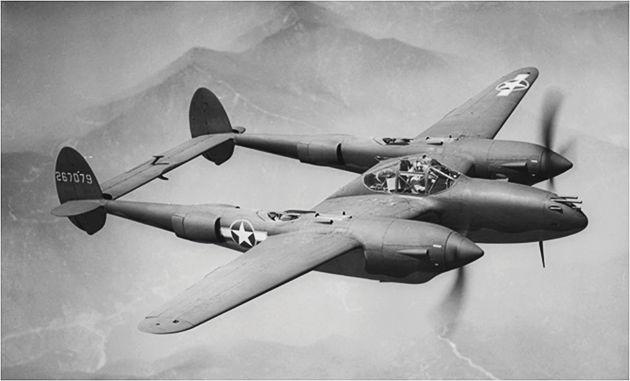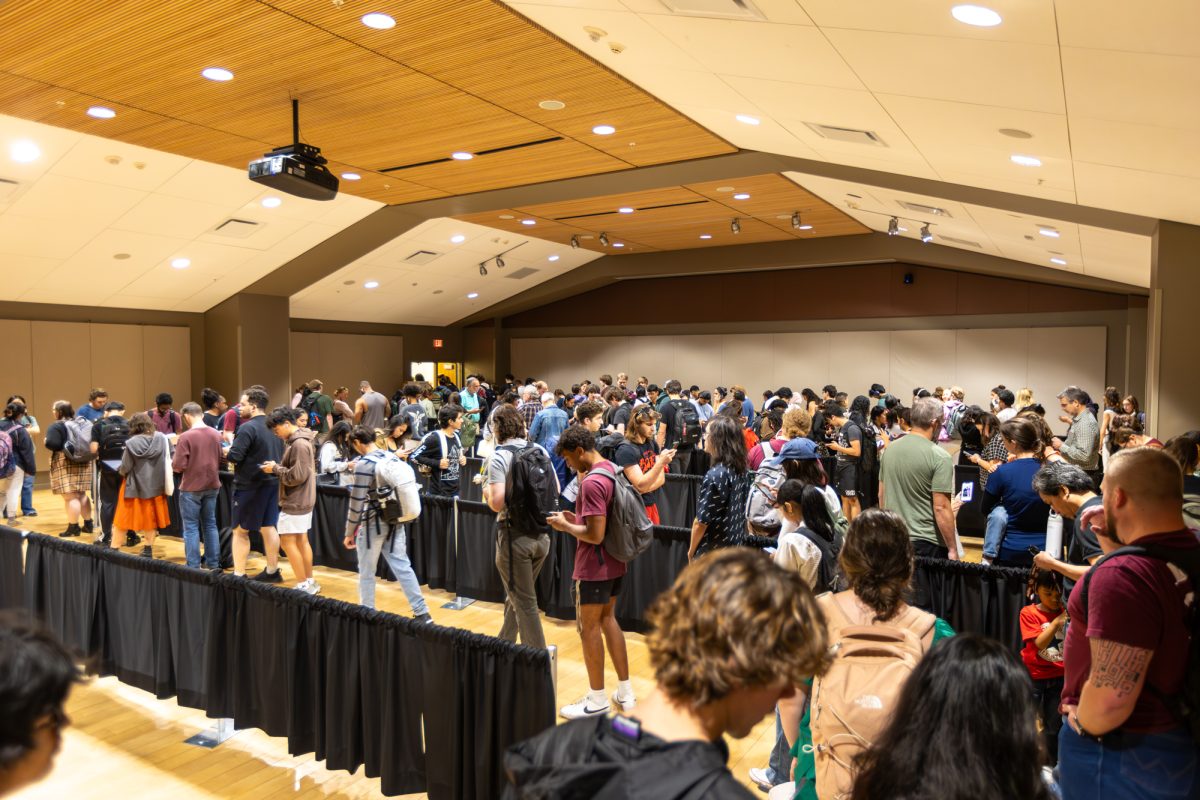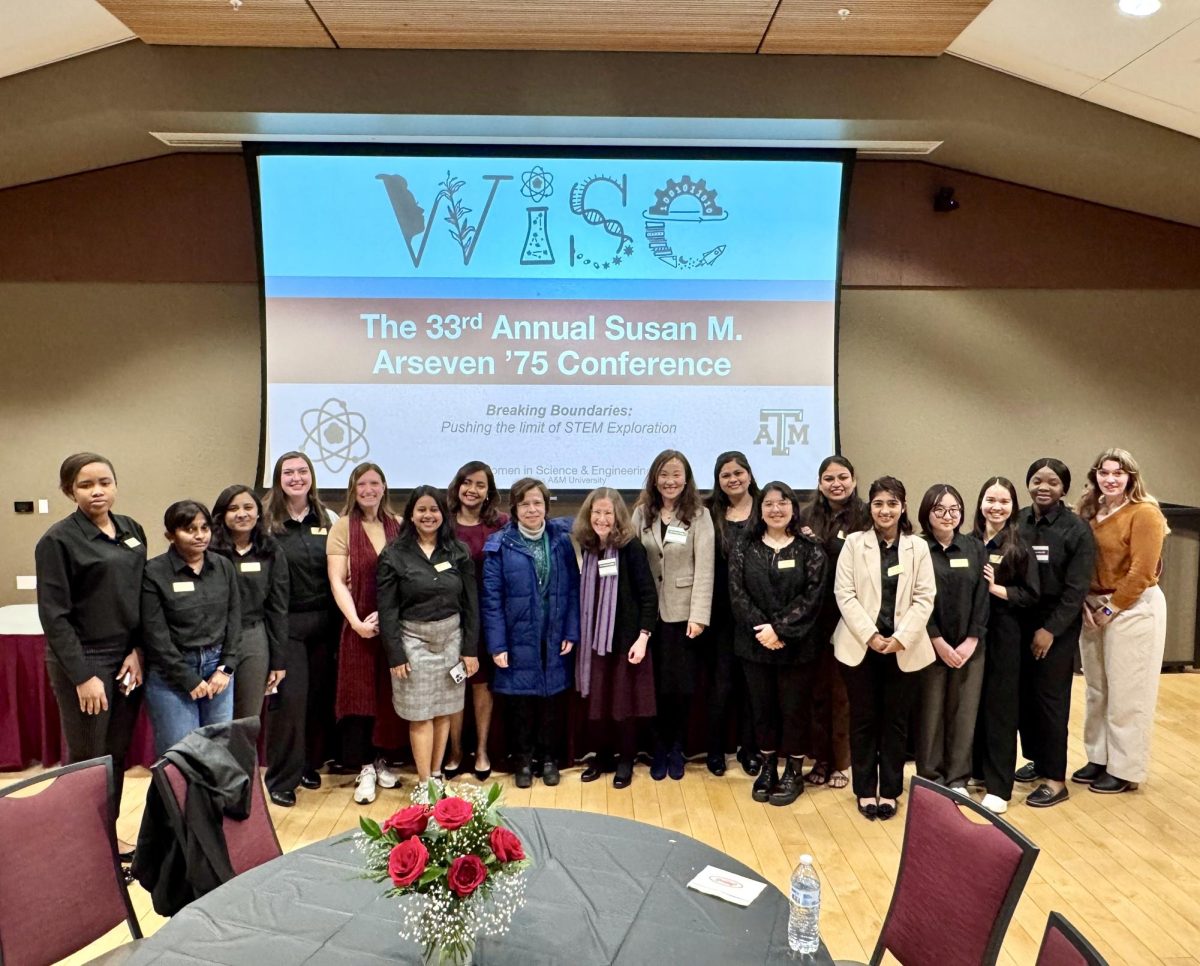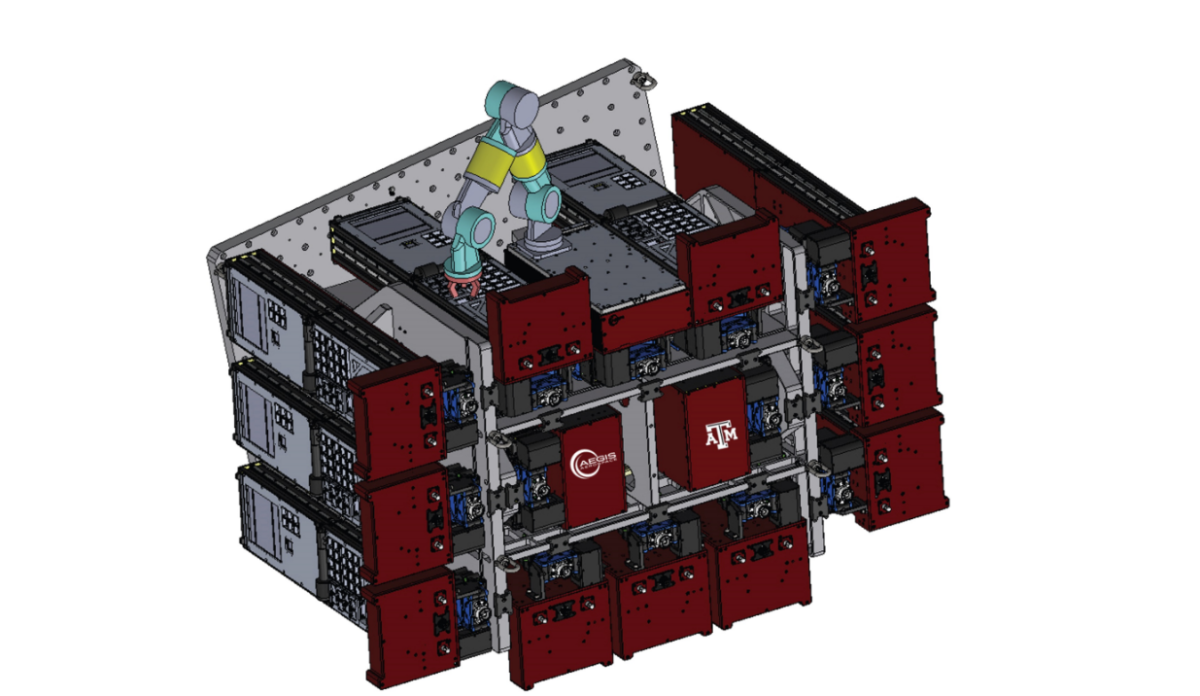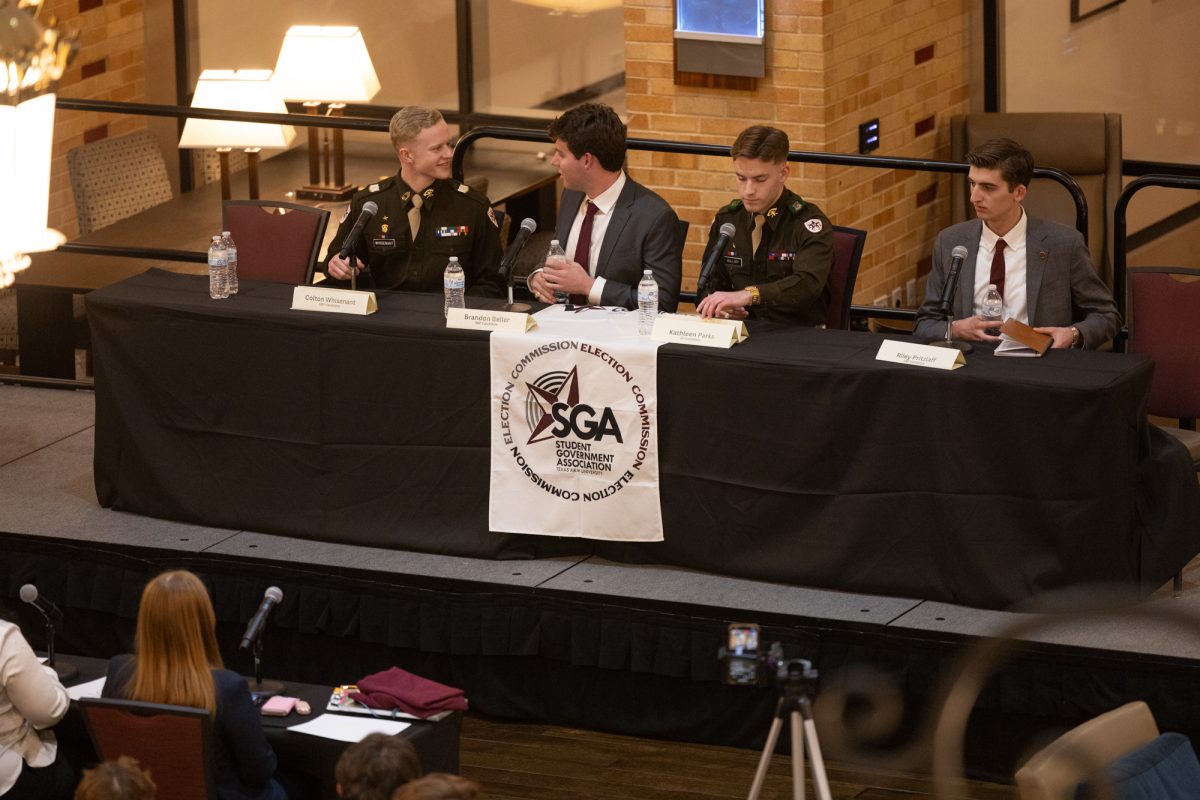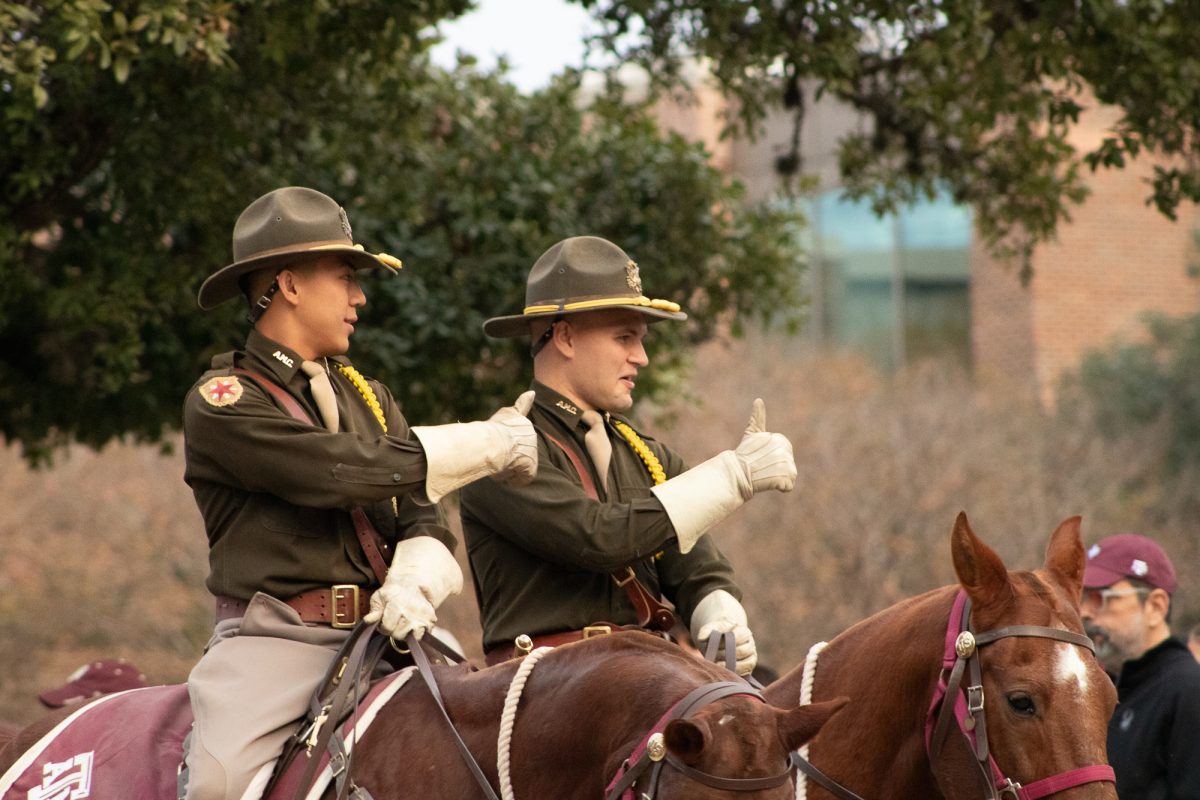Texas A&M Archaeology Department heads and geophysicists will work together to uncover World War II aircraft that have been buried for more than 70 years.
According to the project leader William A. McCaskill, ’86 infrared images provided by the Texas Natural Resources Information System may show where the P-38s were buried at the Victoria Regional Airport prior to its decommissioning as a U.S. Army Air Field in 1945. Due to barriers such as surrounding air fields being shut down and lack of pilots to fly the planes to Oklahoma to be turned into aluminum siding, the airmen were left with no choice than to dig a hole and bury the planes, including one of the bulldozers they used to dig. Little did they know that years down the road would arise the possibility of the aircraft being uncovered by archaeologists from Texas A&M.
Last week, professors in the College of Geosciences Rick Giardino and Mark Everett and Peter Fix of the A&M Anthropology Department, met with McCaskill to discuss a plan moving forward. They will meet with the Victoria County Airport Commission on April 27. If approved, the second stage will be executed early summer, and will include assessments for the purpose of amassing the geographical display of the site in four spots.
Fix said the project is currently in the investigative phase.
“[The U.S. Army Air Force] had so many planes at the end of World War II, [they] didn’t know what to do with them all,” Fix said. “A lot of aircraft were just melted down essentially, and turned into non-wartime materials, like aluminum siding, or metal doors, or nails, things to rebuild our economy in other ways … What the folks did was just dug a big hole around and shoved them in.”
In terms of the first phase, a ground penetrating radar (GPR) scan and gradiometer work have already been conducted at the site. Right now, the main goal is to properly manage the site and keep everything under control, Fix said.
Additionally, per the Texas Historical Commission, the archaeological site in Victoria must not be destroyed after use, meaning precautions are taken early on in the procedures.
“What we want to do is … get a good understanding that if they are there, what’s their situation and orientation in the ground,” Fix said. “Also, once you dig something up, it’s kind of the same adage as, ‘You break it, you buy it.’ Once you pull something out of the ground like that, it’s going to be subject to degradation and deterioration potentially very quickly.”
The next step is electromagnetic induction (EMI) and electrical receptivity tomography (ERT). Fix anticipates concern and cautious measures until the aircraft is officially identified.
“Until we find them, until we know what’s there,” Fix said. “We have a huge goal, but little plans intact to get us there, and that’s what the next procedure’s all about.”
With this specific category of aircraft, the concealed P-38 Lightnings are a unique few left in the world, Fix said.
“There aren’t that many left, and there aren’t that many that are potentially archaeological examples,” Fix said. “Forensically, it’s harder to know exactly how they were built, how they were constructed, what kind of materials they used … some could be perhaps brought out and put in a museum here in Texas for people to see.”
Regarding a website found by McCaskill, all of the aircraft that had crashed between 1941 and 1945 were possibly buried in one of four holes on the Victoria Regional Airport, previously known as Foster Field. During that time, the surrounding airfields were shutting down, so burying the aircraft proved as the only option.
“The reason why they buried the airplanes is one, they didn’t have enough pilots to fly them to Oklahoma … where [the aircraft] were being melted down to turn into aluminum siding for housing,” McCaskill said. “There wasn’t the logistics available like aviation fuel to be able to fly these things up to where they would turn them in.”
McCaskill said should the strategies continue as planned, this discovery will make history in the field of archaeology.
“What former U.S. Army Fighter Gunnery School group commander Mr. Ron Brown said was that they dug the hole with two bulldozers, one of the bulldozers broke down during the process, and the other bulldozer ended up pushing the second bulldozer into the hole also, as witnessed by Brown,” McCaskill said. “They rolled the P-38 Lightnings down the ramp that they had made … if the other stories are accurate that they buried everything out there, we could be onto one of the largest aviation archeological finds in the world.”
When attempted by the Texas Historical Commission, the ground allowed them to scan only about six feet deep. However, because of the P-38 measurements, McCaskill said the scans and subesequent digging would need to be 15 to 20 feet in depth.
In the primary phase, it was determined that black gumbo clay was prevalent around the area, which would potentially reflect back during the GPR and gradiometer phase which is why the decision was made to go with the EMI and ERT to be executed by Everett in the second phase.
“Basically, they’ll put these scans that will send the electrical waves down underneath the earth, it’s kind of like seismology,” McCaskill said.
As of now, the plan is to implement the digging phase, in which graduate students will be recruited for the team, during the Texas Mile in Victoria, when all of the runways at the airport are shut down for the mile long race on a two-mile runway. The set-up, tear down and race will occur over a four to five day period in October.
“The participant’s travel trailers all have to stay on the concrete,” McCaskill said. “So while they’re doing their thing, we’ll be doing our thing, hopefully, if the Airport Commission approves it.”
This archaeological find has the potential to make international news, and will also make a significant impact on World War II veterans today, McCaskill said.
“We’re losing World War II veterans daily due to age and illness,” McCaskill said. “But here’s an opportunity for them to see something that they may have flown … our hope is to find these things and be able to pull them out of the ground, and either put them on display or restore them.”
With the necessary assets to accomplish their goal, McCaskill said it is a matter of taking steps of action to the next level. Once the aircraft is unearthed, it will potentially be displayed in a museum to showcase the P-38 lightnings flown during World War II, or return them to flight status.
“It’s a story that everyone in aviation has heard around Victoria, but really no one has ever done anything about,” McCaskill said. “The fact that the technology was not there back in 1985 when ground penetrating radar was brand new … but here today, we have an opportunity to pool the resources with the state of Texas and Texas A&M to be able to potentially pull off this incredible, archaeological find.”
Editor’s note: Bill McCaskill’s daughter is a reporter for The Battalion.
Uncovering history
April 24, 2017
Photo by Provided
After being buried for more than 70 years, a WWII aircraft was found in Texas at the Victoria Regional Airport.
0
Donate to The Battalion
$1415
$5000
Contributed
Our Goal
Your donation will support the student journalists of Texas A&M University - College Station. Your contribution will allow us to purchase equipment and cover our annual website hosting costs, in addition to paying freelance staffers for their work, travel costs for coverage and more!
More to Discover




